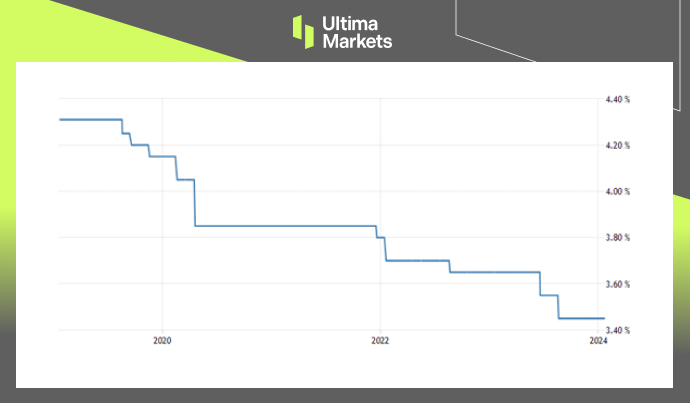You are visiting the website that is operated by Ultima Markets Ltd, a licensed investment firm by the Financial Services Commission “FSC” of Mauritius, under license number GB 23201593. Please be advised that Ultima Markets Ltd does not have legal entities in the European Union.
If you wish to open an account in an EU investment firm and protected by EU laws, you will be redirected to Ultima Markets Cyprus Ltd (the “CIF”), a Cyprus investment firm duly licensed and regulated by the Cyprus Securities and Exchange Commission with license number 426/23.

Understanding PBOC’s Decision to Hold Lending Rates Steady
The People’s Bank of China (PBoC) recently announced its decision to maintain lending rates stable, surprising market observers and triggering widespread market downturns. This move, which came amid expectations of further easing, reflects the central bank’s cautious approach towards monetary policy adjustments.
Stability in Lending Rates
The PBoC’s decision means that the medium-term lending facility, including the one-year loan prime rate (LPR) and the five-year rate, remains unchanged. The one-year LPR, crucial for both corporate and personal loans, stands at a historic low of 3.45%, while the five-year rate, a key determinant for mortgage rates, remains steady at 4.2%.

(China Loan Prime Rate, PBoC)
Impact on Market Sentiment
Following the announcement, both the Shanghai Composite and the Shenzhen Component experienced significant declines, with the Shanghai Composite dropping by 2.68% and the Shenzhen Component plummeting by 3.5%. This decision defied market expectations, leading to broad selloffs and exacerbating concerns about the Chinese economy’s trajectory.

(Shanghai Composite Index 5-year Chart)

(Hang Seng Index 5-year Chart)
Economic Outlook
Despite registering a 5.2% year-over-year growth in the fourth quarter of 2023, slightly below expectations, China’s economy demonstrated resilience amid challenges. The GDP expanded by 5.2% annually, surpassing the government’s target and accelerating from the previous year’s growth rate of 3.0%. Various supportive measures, coupled with a favorable base effect, contributed to this growth.
PBoC’s Strategy
The PBoC’s decision to maintain lending rates stable while increasing liquidity injections underscores its focus on balancing growth objectives with financial stability. By opting for targeted measures to manage liquidity and support economic recovery, the central bank aims to mitigate risks while sustaining
Bottom Line
In a surprising move, the PBoC’s decision to keep lending rates unchanged reflects its cautious stance amidst evolving economic conditions. While disappointing market expectations, this decision underscores the central bank’s commitment to maintaining stability and managing risks in the financial system.
Frequently Asked Questions
1. Why did the PBoC decide to hold lending rates steady?
The PBoC opted to maintain stability in lending rates to balance growth objectives with financial stability amidst evolving economic conditions.
2. What are the implications of the PBoC’s decision on market sentiment?
The PBoC’s decision to hold rates steady surprised markets and triggered widespread selloffs, reflecting concerns about the trajectory of the Chinese economy.
3. How has China’s economy performed despite the PBoC’s decision?
Despite the PBoC’s decision, China’s economy demonstrated resilience, with the GDP expanding by 5.2% annually, outpacing government targets and accelerating from the previous year’s growth rate.
لماذا تختار تداول المعادن والسلع مع Ultima Markets؟
توفر Ultima Markets البيئة التنافسية الأفضل من حيث التكلفة والتبادل للسلع السائدة في جميع أنحاء العالم.
ابدأ التداولمراقبة فعالة للسوق أثناء تنقلك
الأسواق عرضة للتغيرات في العرض والطلب
جذابة للمستثمرين المهتمين فقط بالمضاربة على الأسعار
سيولة عميقة ومتنوعة بدون رسوم مخفية
لا يوجد مكتب تداول ولا إعادة تسعير
تنفيذ سريع عبر خادم Equinix NY4














